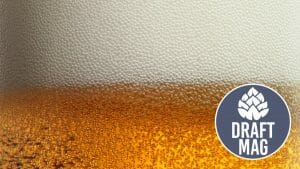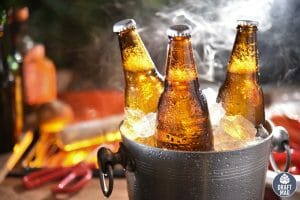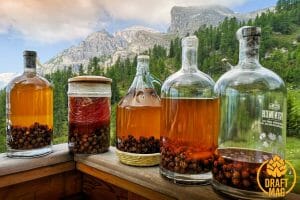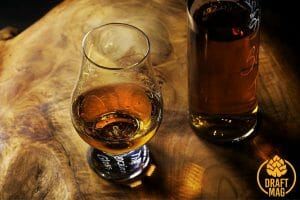Flat Beer to Carbonated: Bring Your Boring Flat Beer Back to Life

No one should have to suffer through the bitter, heavy and boring taste of flat beer. However, there’s good news; you can turn the beer around into something delicious. This guide focuses on what to do if your beer tastes flat, how to avoid it, and how to recarbonate it.
Summary of Content
Here are some of the flat beer questions we’ll answer:
- What is a flat beer?
- How to know when your beer is flat.
- What makes a beer carbonated or non carbonated?
- How to carbonate your beer.
- What does an uncarbonated beer taste like?
- Can a glass of flat beer make you sick?
What Is a Flat Beer? Does It Contain Less Alcohol?
Flat beer is a type of beer that is non carbonated or otherwise conditioned. It has the same amount of alcohol as normal beers, but is lighter in taste and can be consumed without carbonation. Flattened beer is usually served with no head and has little or no carbon dioxide in it. It can also be referred to as an uncarbonated beer. Learn more about non carbonated beer in our detailed article.
When Can You Conclude That a Beer Is Flat? Haunch or Evidence
Beer is said to be flat when there’s not enough carbon dioxide (CO2) in it. CO2 leaves the beer when it is stored in warm places or under hot conditions. Sometimes it can happen after a short period, but the most common cause is when the beer has been in warm storage for too long.
When a beer is said to be flat, it no longer has gas in it. The CO2 that sustains the bubbles can escape through the opening up of tiny holes that are created during fermentation processes. To identify whether your beer is flat or not, look for these signs:
- There are no visible bubbles when you pour your beer into a glass.
- The head disappears quickly when you pour it from the keg into a glass.
- When you pour your beer into another glass if it doesn’t make any crackling noise.
What Does an Uncarbonated Beer Taste Like? Sour, Heavy, or Both?
While most beer lovers hate drinking uncarbonated beer due to its flattened taste, some beer lovers prefer drinking uncarbonated beer because it tastes different from the usual sparkling drinks. It has a subtle bitterness that lingers on your tongue for a good while after the drink is finished. Carbonation makes the beer bubbly and light, and sometimes it is so fizzy that you can’t taste it in full. This is however not the case when you enjoy a beer with no carbonation.
How To Keep The Beer From Going Flat: Its Causes and How To Avoid It
Beer, both home brewed and bottled, can lose its carbonation and go flat, even during production. Here are some common causes:
- Failure to give the beer enough time: Ensure that the beer stays put for two weeks or more to enable it to ferment.
- Failure to use adequate priming sugar in your beer, or using slowly fermenting sugar: The more the sugar, the more the carbon dioxide content. Always ensure that you thoroughly mix the sugar.
- Storing your beer at an extremely low temperature: Raise the temperature in the refrigeration unit that holds your kegs (ideally, to between 36 and 40 F). If using glycol to dispense, ensure that your glycol bath is set to dispense at that range as well.
- The CO2 pressure is too low, or if the CO2 escapes: Adjust your regulator to raise the CO2 pressure. Keep the jar or bottle tightly covered.
- Using a dirty glass: Grease is the enemy of carbonation. Ensure your glasses are “beer clean,” and rinse with cold water just before pouring.
How To Carbonate a Home Brewed Beer in A Keg: The Two Fastest Ways
Before carbonating your beer in a keg, ensure you have the following equipment:
- Get a good beer keg
- Get the required tubes and keg disconnects
- Buy a carbon dioxide gas cylinder
- Make sure you have a carbon dioxide beer regulator
- Find a force carbonation chart
– Method 1. Using The Force Carbonation Method
The force carbonation process utilizes pressurized CO2 gotten from the gas cylinder. To carbonate the beer, simply set the keg of beer at a cold temperature. The low temperature lets the carbon dioxide efficiently diffuse into the beer.
After setting the temperature and the carbonation rate, set the CO2 regulator to the pressure as the temperature. Your beer will carbonate within five to ten days instead of two to four weeks.
– Method 2. Adding PSI Into the Keg of Beer
For a faster result than the force carbonation method, you can simply add thirty to forty carbon dioxide PSI in the cold keg. Next, thoroughly rock or shake the keg to make it diffuse faster. Carbonation process lasts within 12 hours to three days depending on how much you shake the keg and how cold the temperature is.
After successfully carbonating the beer, reduce the CO2 regulator pressure to the serving point to release excess CO2. Make sure you leave the beer for one hour before consuming it.
How To Carbonate Beer in a Bottle: Two Foolproof Methods
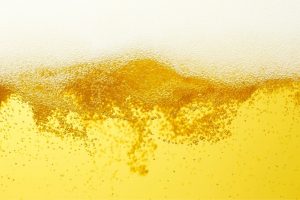
If you’ve bought your beer in bottles, all hope is not lost. Here are some surefire ways to recarbonate bottled beer:
– Method 1. Introduce More Sugar to the Bottled Beer
The first method is by adding priming or fermenting sugar in your beer with these simple steps to fix flat beer in a bottle. First empty the bottle of its contents and clean up the bottle. Next, place about two tablespoons of sugar in the bottom of the bottle and shake it up well before refilling with beer.
Replace the cap on your bottle and then rinse it with hot water to cool down its temperature (this makes sure that condensations don’t form in the bottle).
– Method 2. Thoroughly Shake the Bottle
The second method can be achieved by shaking or rolling your beer bottle. This will work if your beer is cold enough and if you are patient enough. If it doesn’t work, try using warm water or hot tap water to heat the CO2 bubbles within your beer before shaking them again.
What Makes a Carbonated Beer Different From an Uncarbonated One?
A major difference between a carbonated beer and a low carbonation beer is the level of carbon dioxide in it. The difference in CO2 is also what makes carbonated beer taste different from a flattened beer.
Beer is a fermented beverage, and it goes through a process called carbonation to make it fizzy and bubbly. When yeast fermentation takes place, it produces ethanol and carbon dioxide as two of its byproducts. Carbon dioxide bubbles are then released into the headspace of the bottle or can and create pressure at this point.
Various factors can affect how much CO2 is released from the yeast during fermentation: nutrients, temperature, pH level, alcohol content and type of yeast used. The higher the level of carbon dioxide, the higher the level of carbonation in the beer. However, the absence of CO2 in a beer makes it uncarbonated.
Can a Glass of Flat Beer Make You Sick? Just a Myth?
No, flat beer cannot make you sick. A widely-held myth says that drinking a glass of flat beer can make you feel sick, but it’s just an urban legend. The bottom line is, there is no scientific data to prove that the drink will cause illness or sickness. However, while a person would not get sick from drinking a glass of flat beer, it still might not taste very good.
Such belief stems from the fact that flat beers are not carbonated enough to cause bubbles in the drink. Since flat beer doesn’t contain gas, it can’t cause bubbles like other beverages. Drinking flat beer may taste dull in the mouth. Its dull taste may cause an uncomfortable feeling in the stomach.
Pros and Cons of Uncarbonated Beer
Pros:
- The non-carbonated beer feels smoother on the tongue.
- Non-carbonated beer is great for people who can’t consume carbonated beverages for health reasons.
- When drinking a beer with no carbonation, you get to swallow less gas and more liquid.
- Non-carbonated beer contains little or no amount of carbon dioxide.
Cons:
- Non-carbonated beer may taste weird on the tongue.
- Non-carbonated beer has a bitter taste that lingers in the mouth.
FAQ
Will flat beer still get you drunk?
Yes, flat beer can still get you drunk as the alcohol content remains unchanged. However, the taste and quality may be affected.
Does beer go flat if you drop the can?
Dropping a can of beer can cause it to lose carbonation and become flat due to the sudden agitation that releases carbon dioxide gas.
Can I carbonate flat beer in a soda stream?
Yes, it is possible to carbonate flat beer using a soda stream, but the result may not be the same as freshly carbonated beer.
Conclusion

At this point, we’ve discussed flat or non-carbonated beer and how to carbonate beer extensively. Here is a walkthrough of all that you have learned about flat beer.
- Contrary to popular beliefs, non-carbonated beer does not make you sick.
- Flat beer usually contains the least amount of carbon dioxide.
- Non-carbonated beer can be fixed through the process of recarbonation.
- The major difference between a flat beer and a carbonated beer is the quantity of carbon dioxide in the beer.
- A glass of carbonated beer feels light and bubbly on the tongue, while a glass of flat beer tastes bitter and feels a bit heavy and dull.
- It is very easy to carbonate beer stored in a bottle or a keg.
- Very high temperature or low temperature can reduce the level of carbonation in a beer.
Whether you are taking a home-brewed beer or a store-gotten beer, you may not like the taste of a flat beer. Thankfully, you can recarbonate your beer within a few seconds or minutes. All you need to do is follow the written instructions or recarbonate your beer. Get ready for a refreshing taste.

